How to Vixie? Make a Double Half-Hitch knot?
Get ready to dive into one of the most essential knots in the macrame world—the Double Half-Hitch! In this tutorial, we’ll explore how this powerful little knot can transform your designs with bold lines, curves, and intricate patterns. Whether you're mapping out a new wall hanging or adding detail to your latest masterpiece, this step-by-step guide will help you master the technique with confidence. Grab your cord, channel your inner explorer, and let’s get knotting!st description.
KNOTS TUTORIALS
Vixie Macrame
6/13/20255 min read
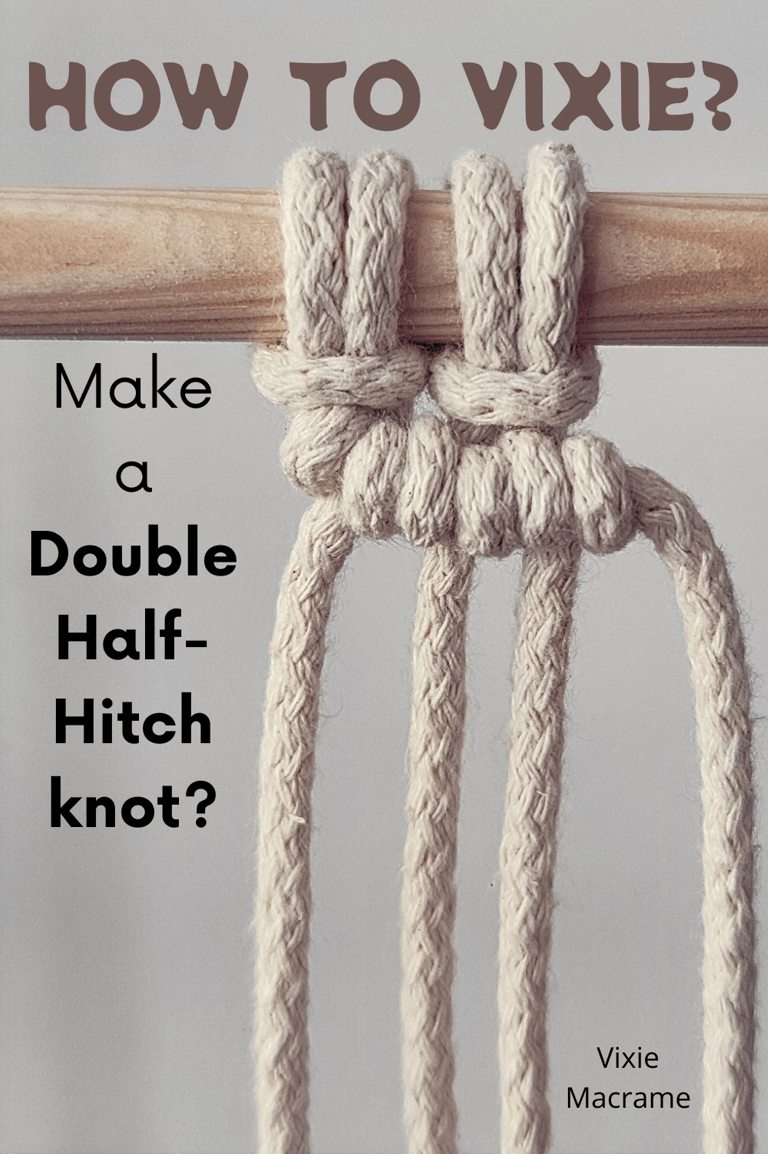

The Double Half-Hitch knot is essential for anyone interested in macrame, offering versatile and secure stitching for creating patterns and designs. It allows crafters to make horizontal, vertical, or diagonal lines, making it a foundational knot for many macrame projects. Mastering this knot is key to improving both skill and the appearance of any handmade piece.
This knot is relatively simple but requires practice to perfect. It uses two strands to tie a reliable Hitch that can be repeated for consistent results. This tutorials show how to tie the knot slowly step-by-step, making it accessible even for beginners who want to try DIY macrame.
Learning the Double Half-Hitch knot opens up a wide range of creative possibilities, from bracelets to wall hangings.
Understanding the Double Half-Hitch knot
The Double Half-Hitch knot is a basic but powerful tool in knotting and crafting, especially in macrame. Its structure provides durable and adjustable connections, making it a staple technique. The knot’s applications extend beyond decorative purposes to practical uses in securing objects and creating strong lines.
History and Origins
The Double Half-Hitch knot has deep roots in maritime and climbing traditions. Historically, sailors relied on it for securing ropes to poles or rings because of its reliability and ease of adjustment. The knot is closely related to the Clove Hitch but adds an extra loop for enhanced strength.
In older craft and ropework manuals, it was often described as a Fundamental Hitch knot. Its simplicity and effectiveness led to widespread adoption not only on ships but also in outdoor activities such as camping and climbing. Over time, its use transitioned into textile arts like macrame.
Uses in Macrame and Beyond
In macrame, the Double Half-Hitch knot is essential for creating patterns and shaping designs. It forms horizontal or diagonal lines and is often combined with other knots to build intricate textures. The knot’s ability to stay tight under tension makes it ideal for wall hangings, plant hangers, and jewelry.
Beyond crafting, the Double Half-Hitch is practical for securing items in outdoor and survival scenarios. Arborists use it for controlling ropes in tree work, while climbers employ it as a secure and adjustable attachment. Its versatility comes from its ability to hold firmly yet be untied without difficulty.
Why the Double Half-Hitch Is Essential
The Double Half-Hitch knot’s strength lies in its double loop configuration, which distributes pressure evenly along the rope. This prevents slipping and maintains tension in macrame projects. Its straightforward tying process allows beginners to learn quickly while offering advanced users precise control.
Mastering this knot enables crafters to explore complex macrame patterns and techniques. It serves as a foundation for building stability and symmetry in their work. Additionally, its adaptability supports a wide range of applications, making it a fundamental skill for anyone working with ropes or cords.
Step-by-Step Double Half-Hitch knot Tutorial
The Double Half-Hitch knot requires controlled movements to maintain neat lines in macrame projects. It involves wrapping the working cord around a holding cord twice to secure it firmly. Proper technique and attention to tension are essential for clean, consistent patterns.
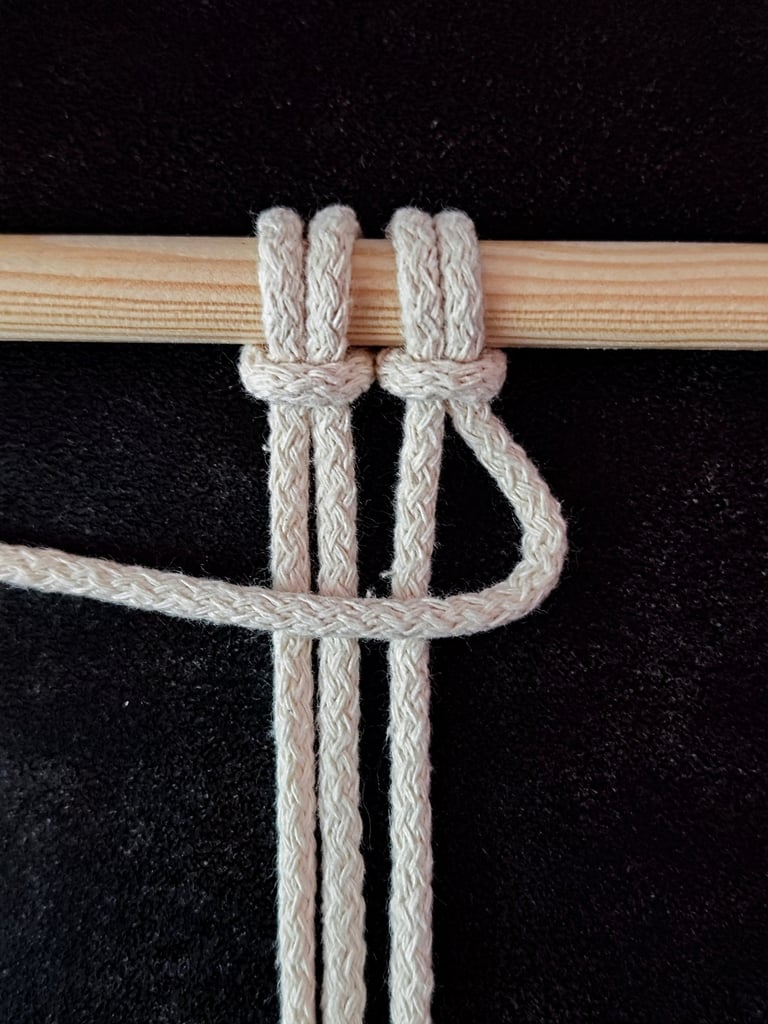

LEFT SIDE
RIGHT SIDE
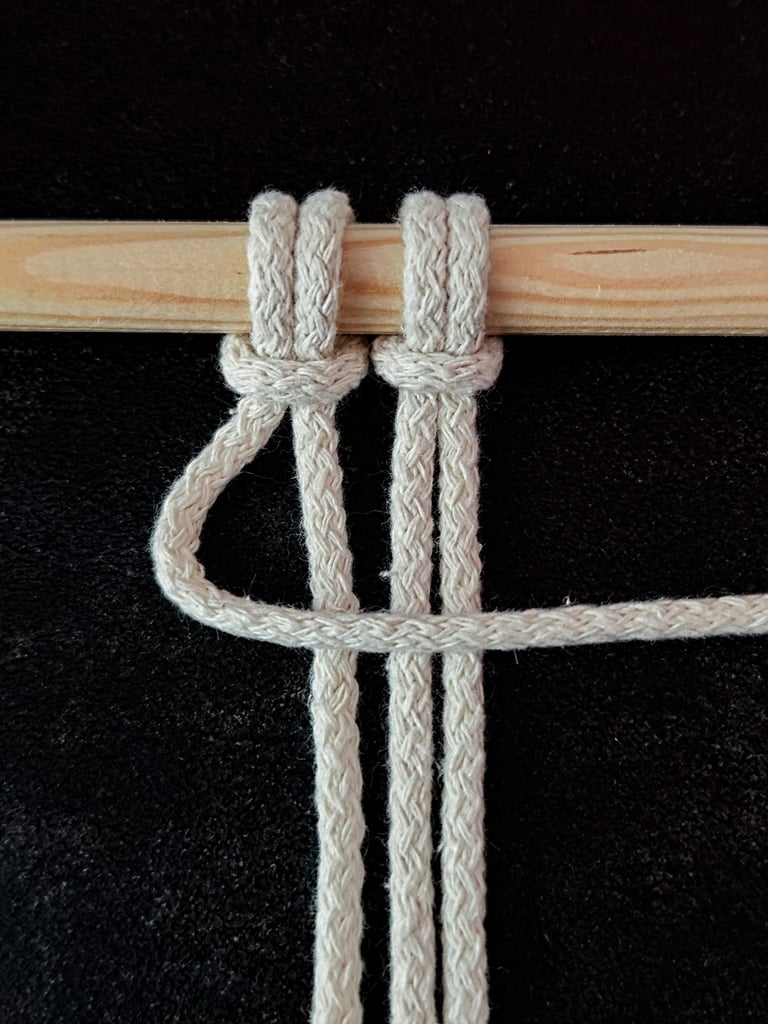

STEP 1
Take the 1st cord as your anchor cord and hold it horizontally across the working cords, making a number 4 shape.
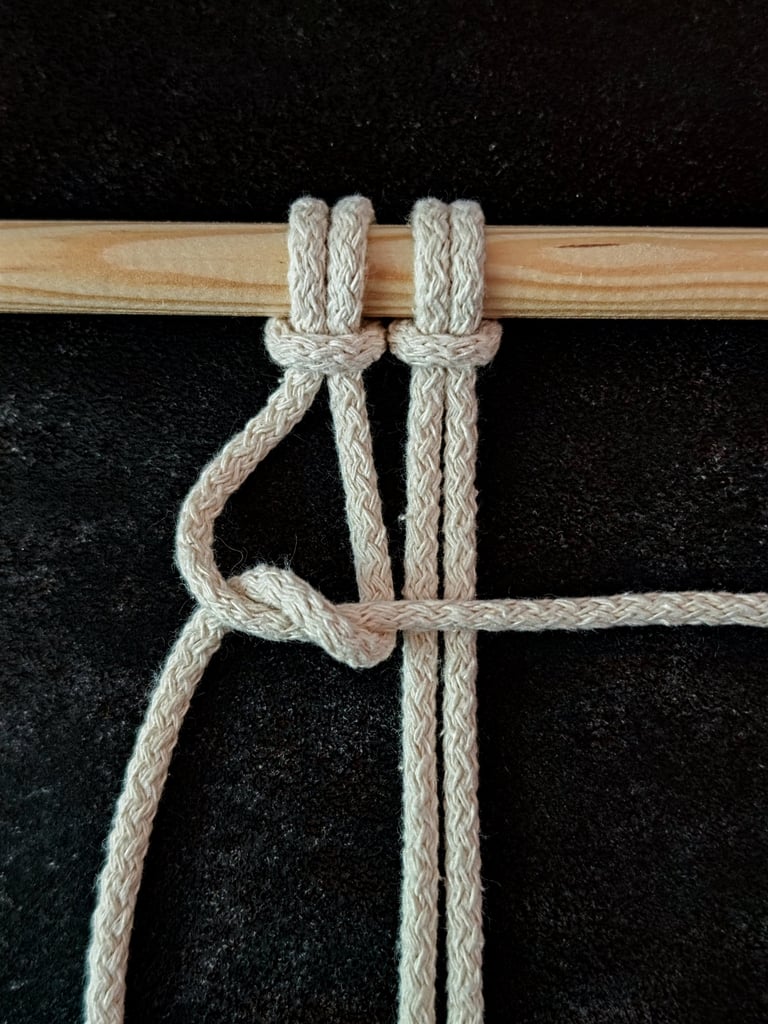

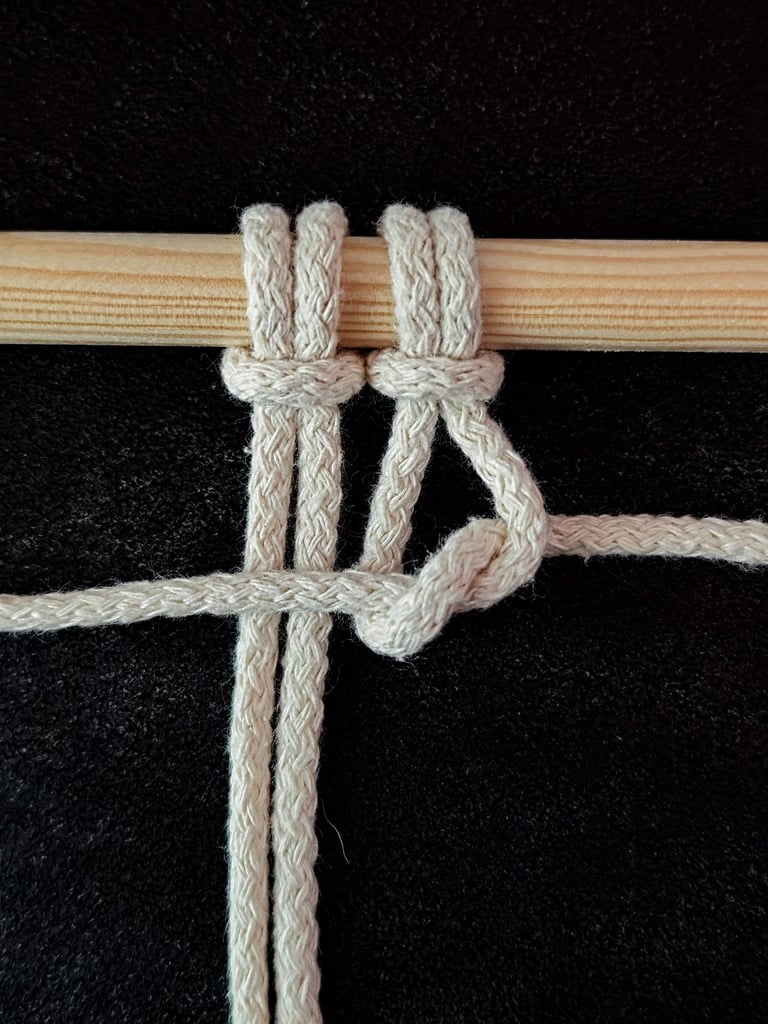

STEP 2
Wrap the working cord under the anchor cord, up and back through the loop you just created.
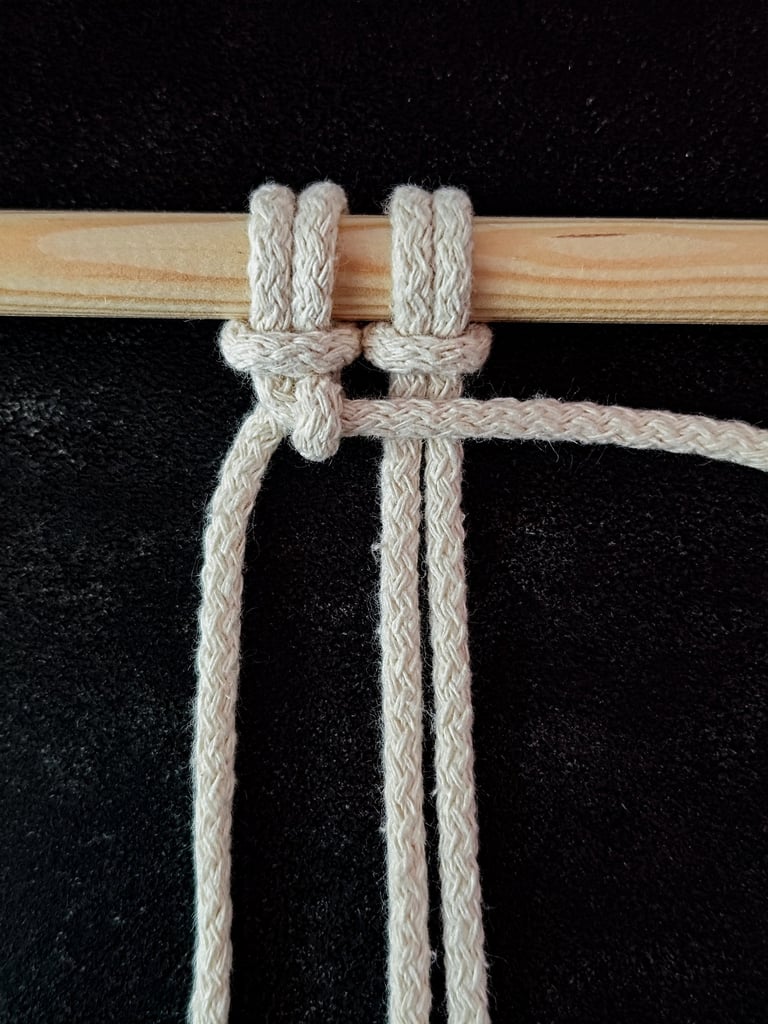

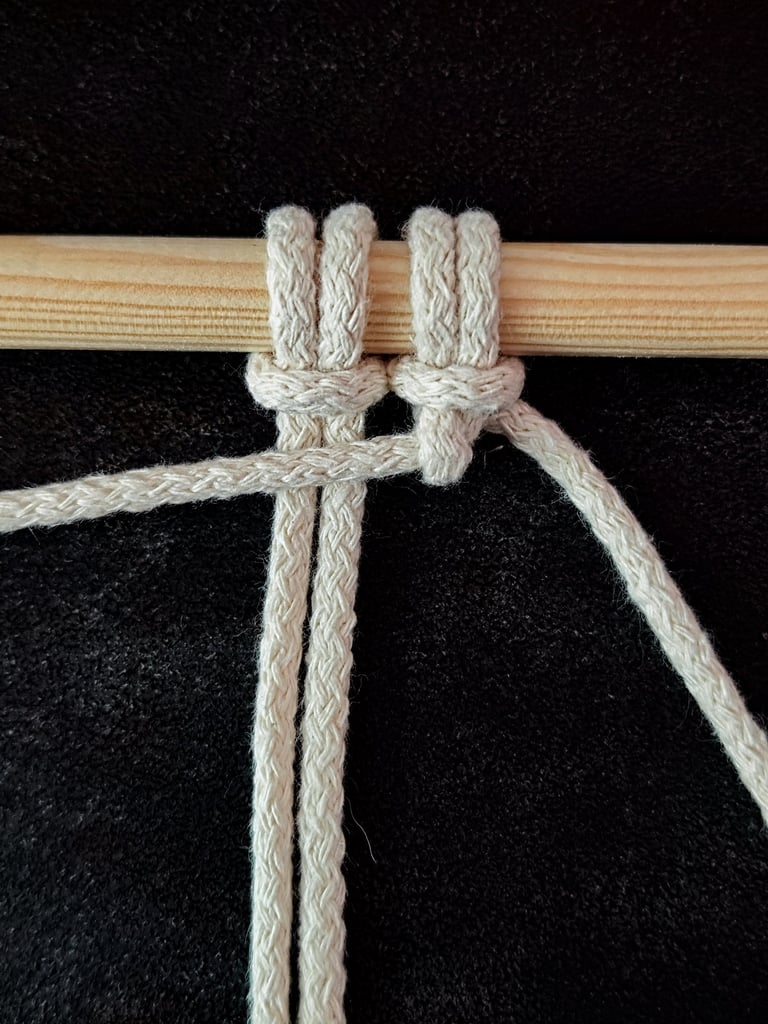

STEP 3
Pull the working cord to tighten. You have made your 1st Half-Hitch knot.
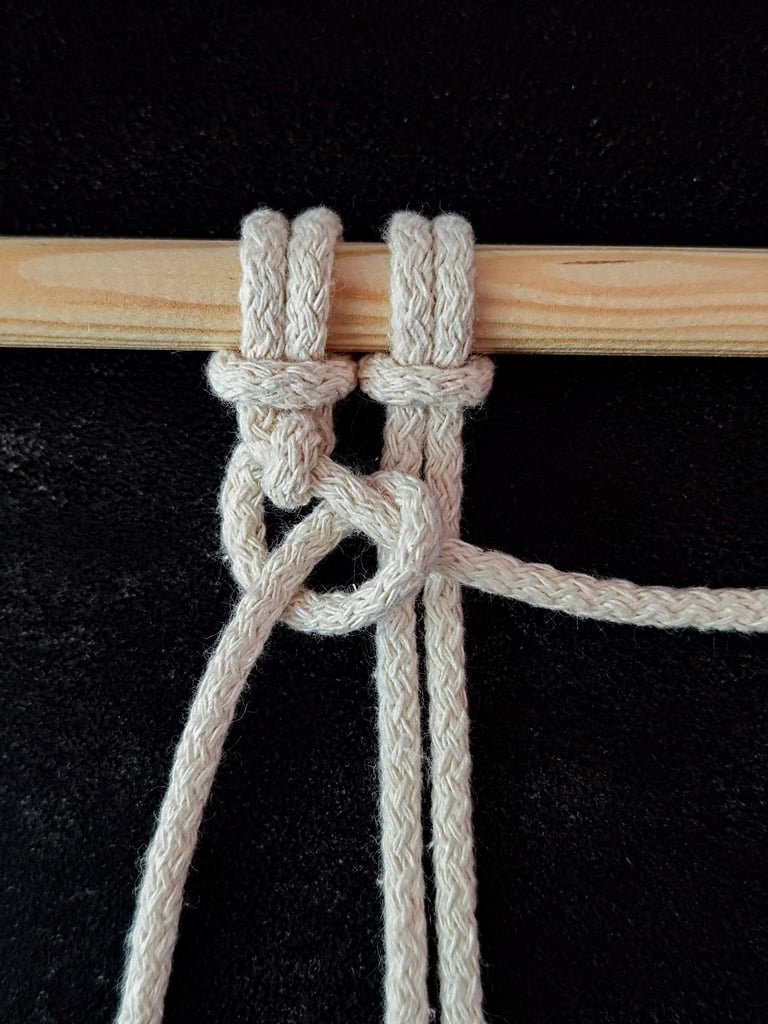

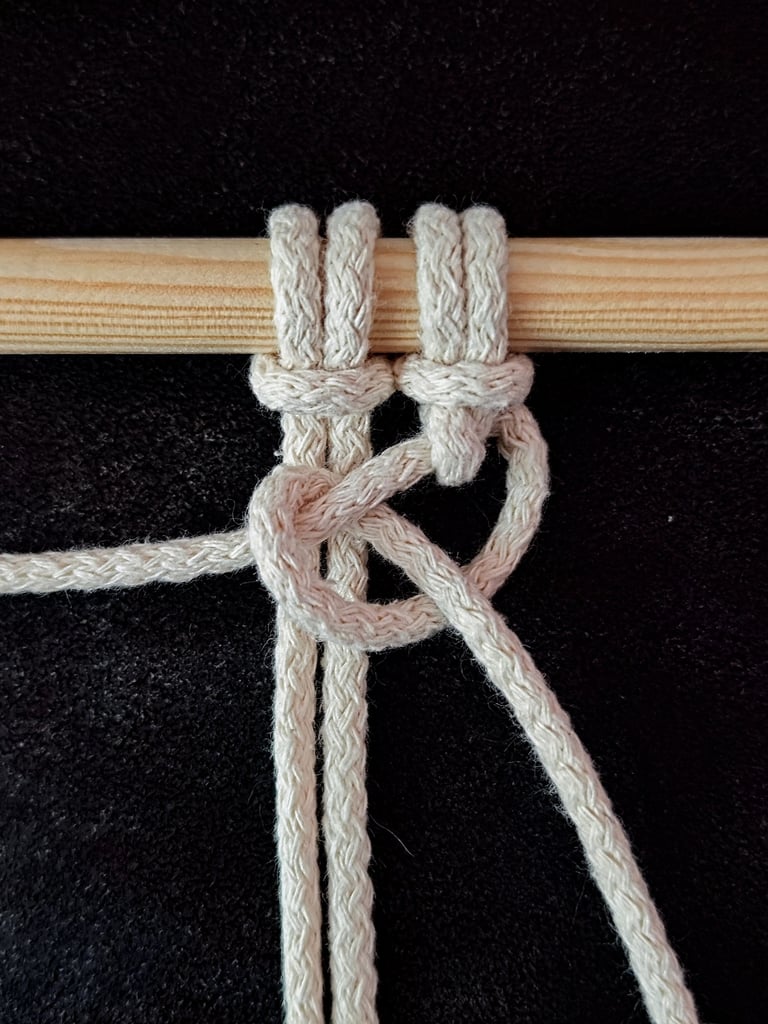

STEP 4
Use the same working cord, go under the anchor cord again, up and back down through the loop you just created.
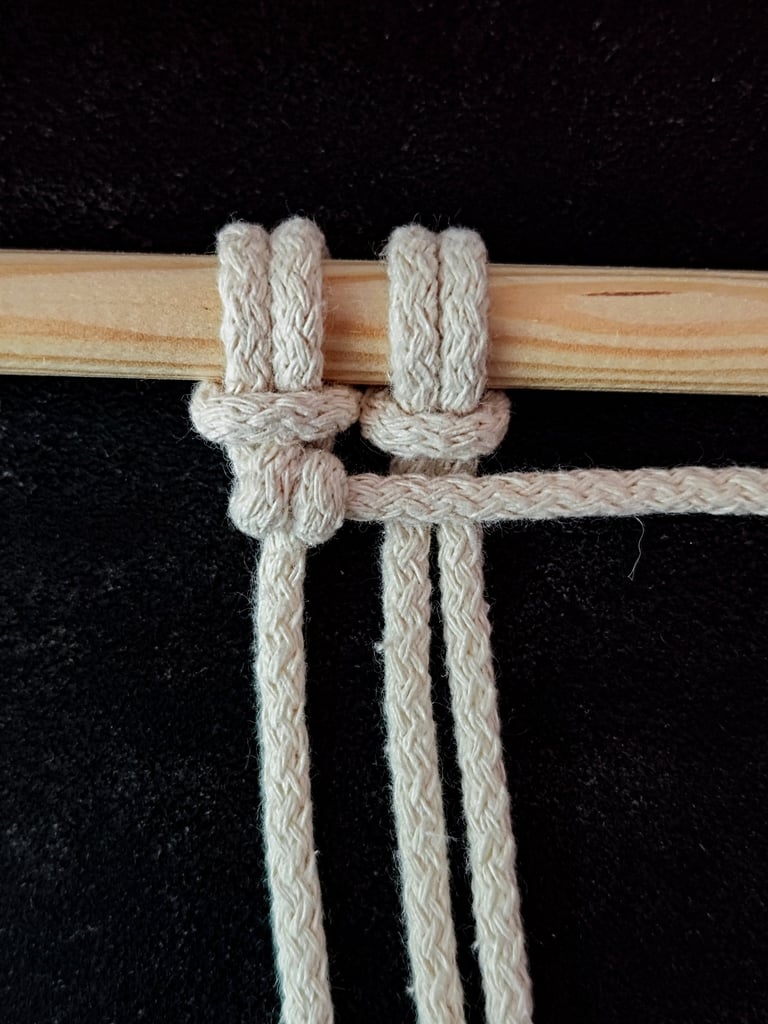

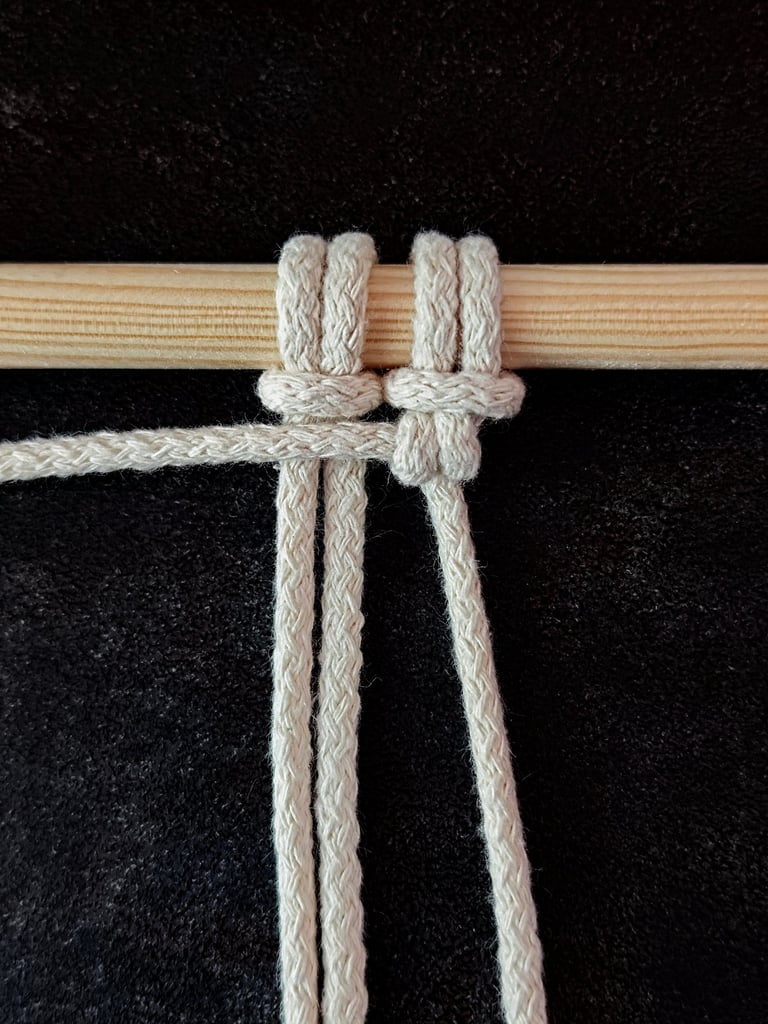

STEP 5
Pull the working cord to tighten it all up and you've made your 1st Double Half-Hitch knot.
STEP 6
If you want to make a row, the anchor cord stays the same. But the working cord is now the 2nd cord. Repeat from STEP 1-5, and then take the 3rd cord as your next working cord. Repeat again, and so on.
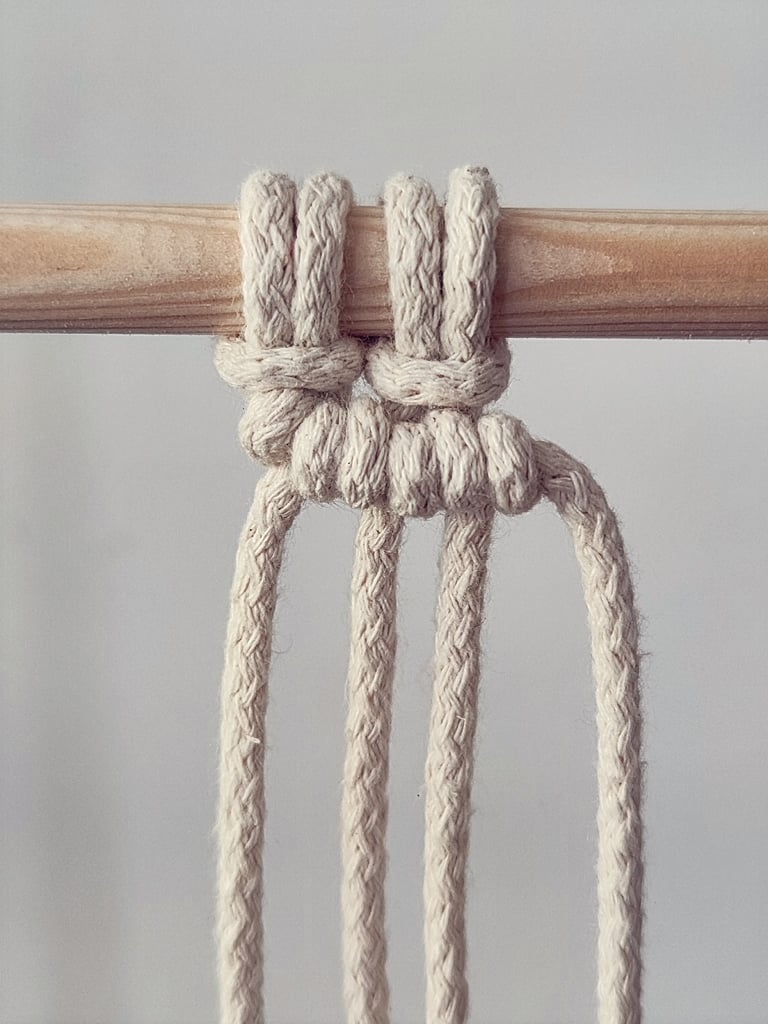


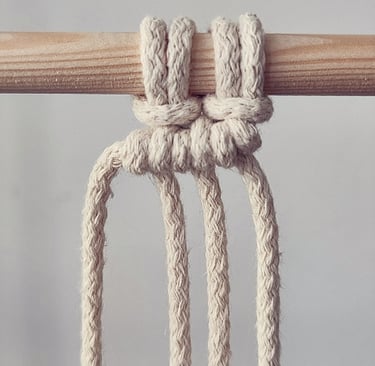
Common Mistakes and How to Avoid Them
A frequent error is uneven tension—tying one Half-Hitch tighter than the other causes distortion in the pattern. To avoid this, keep each loop consistent in size and tightness.
Another mistake is using a weak or stretched holding cord. A firm holding cord keeps knots aligned and prevents shifting. It’s also important to avoid twisting cords during wrapping; the working cord should flow smoothly around the holding cord.
Failing to pull the second Half-Hitch tight enough can loosen the knot, so always secure both Hitches firmly. Regularly check your work to maintain uniform knot placement.
Tips for Consistent Tension
Maintaining even tension requires a calm, deliberate approach. Work with consistent hand pressure to prevent knots from becoming too loose or too tight.
Use your non-dominant hand to hold the holding cord steady while your dominant hand forms the knots. Adjust the tension in small increments rather than forcing tightening all at once.
Frequent breaks allow for reassessing tension and correcting mistakes early. If a knot feels uneven, carefully untie and redo it before continuing. Proper tension leads to clean, professional-looking macrame designs.
LEFT SIDE

RIGHT SIDE

